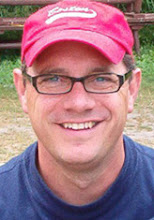
Duke is
doing what it can to be greener, with
LEED building standards, materials recycling and incentives to carpool.
But the bar has been set still higher.
President Brodhead has signed the
American College and University Presidents Climate Commitment, pledging to eliminate or offset Duke’s carbon emissions at some point in the future, maybe 2024, Duke's 100th birthday.
A number of efforts are already underway to reduce Duke’s carbon footprint, such as the re-opening of a natural gas power plant to replace the campus’ coal plant. However, the university probably cannot achieve neutrality with reductions and energy efficiency alone.
Carbon offsets will likely be needed to fill the gap, according to
Tavey Capps, Duke’s director of sustainability.
The trouble is, nobody is sure yet how the offset market will work.
A weekend conference at Duke, hosted by the Environmental Markets Student Group,
called the Carbon Offsets Conference, explored those issues. The
Nicholas School of the Environment, the
Nicholas Institute for Environmental Policy Solutions, and
Sustainable Duke sponsored the event, which was held in French Family Science Center.
Four panels addressed the different types of carbon offsets currently available: renewable energy certificates (RECs), forestry, energy efficiency certificates (EEC), and methane capture.
If the target date becomes 2024, offsets for that year are estimated to cost $2.4 million. It might cost $38 million to continue those offsets until 2050.
Tim Profeta, director of the Nicholas Institute, noted that the voluntary carbon market in the U.S. is “thriving.” Despite a lack of federal leadership, different states and regions are taking strides to create their own cap-and-trade programs.
“We’re going to have great expansion in carbon markets ... the big players [U.S. and China] aren’t in the game yet,” he said.
For its small part, Duke intends to lead, Capps said. “Duke is a university in a forest,” Capps said. “[Sustainability] is not something that’s new to our campus-- it’s in our guiding documents.”
“We recognize that we have a big environmental impact," Capps said. “We’re thinking about offsets as the last piece of the equation,” Capps said. “It involves much more than just writing a check.”
Should Duke be an early adopter, or act later and save money? The university has an opportunity to play a very large role, Capps said. While there is a lot of supply and a lot of demand for offsets, there’s “something missing in the middle,” namely a trusted aggregator. “Duke could fill this role, and take advantage of this opportunity.”
In all aspects, “we’re trying to balance competing priorities and find the best mix for our campus,” Capps said. But more than that, "we have the privilege and responsibility of educating future leaders,” she added.






